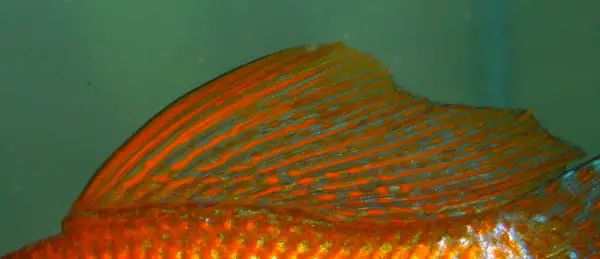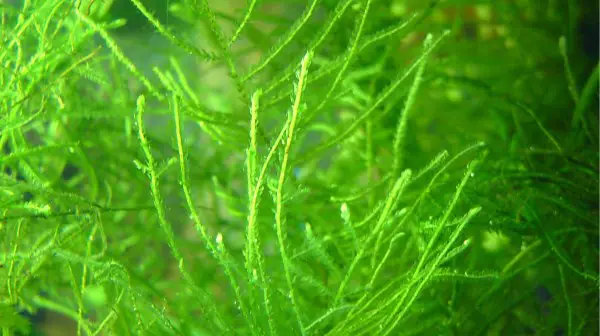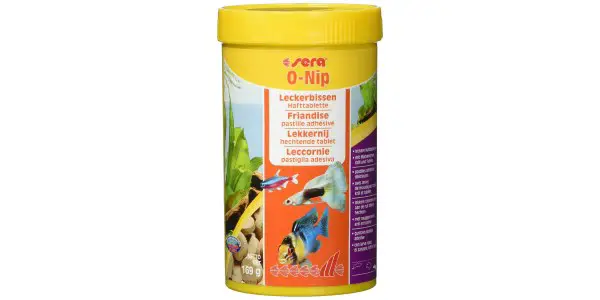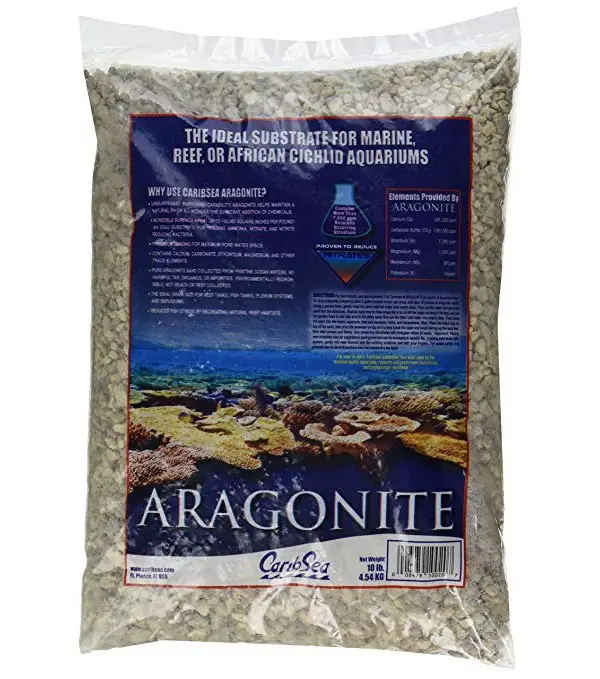So, you’ve either bought or are thinking about buying some sailfin mollies? Well, you’ve come to the right place. In this article we’ll cover what you need to know to keep them successfully, and there’ll be a few tidbits that might surprise you.
There’s a reason the popular fish are the popular fish. Think of a neon tetra; bright red and blue—they’re stunning. Same goes for guppies, they have amazing colors. And even dwarf cichlids like rams and kribs, they’re all great aquarium fish. Those are the kind of fish that big box stores will always keep in stock because they’re so awesome that they’re guaranteed to sell.
Something else you’ll find in most pet stores and fish stores is the sailfin molly. And for me, they’re one of the most interesting choices that a newcomer to the fishkeeping hobby can make. They’re the curve ball fish that are sold as “beginner fish” by a lot of retailers. But, in my opinion, they’re far from beginner fish, but that’s not to say I’m trying to put beginners off keeping them.
Quite the contrary. Because I want you to keep reading my article and then give them a try. I think they’re such a stunning fish that they’re worth the time.
The Various Names The Sailfin Molly Goes By
Common Name: Sailfin Molly
Scientific Name: Poecilia latipinna
Former Scientific Name: Mollienesia latipinna

The origin of part of the common name is evident: the males have large sailfins along their backs. But, since mollies were moved into the Poecilia genus the “molly” part of their name hasn’t made as much sense. But, to the older fishkeepers amongst us, it makes perfect sense. Mollies used to be part of a genus called “Mollienesia”. However, in more recent times, they have been grouped with the guppies in the Poecilia genus. The second part of their scientific name, “latipinna”, means “broad fin” in Latin.
Appearance Of The Sailfin Molly
The sailfin molly is a stunner of a livebearer.
When compared to other livebearers, the sailfin molly can be seen as somewhat of a giant. In good conditions and with a good diet, the fish can push over four inches. And it has a robust, almost rectangular body shape—except for a rounded hump on the back—that is to me, over all, very aesthetically pleasing.
While it’s relatively large size is part of its charm, it’s the over-sized dorsal fins of the males that really seal the deal.
Add a variety of colorful domestic strains and you have the modern, domestic sailfin molly.
Size – How Big Does The Sailfin Molly Get?
I mentioned above that the sailfin molly can push four inches (~10cm). But, usually it’s going to top out at around three inches (~8cm). The Florida Museum of Natural History has recorded a sailfin molly as large as 5.9 inches (150cm)!!!
Sexual Dimorphism – Are The Females And Males Of The Sailfin Molly Different?
Yes, the male and female sailfin mollies are very different. The male has the large dorsal fin that makes sexing the fish a breeze.

Like other livebearers, the male also has the modified anal fin (known as a gonopodium). The male molly’s gonopodium is formed by the rays of the fin formed into a narrow tube that acts as an intromittent organ (i.e. an organ used to deliver sperm and impregnate a female).

There is also a size difference. Fermale sailfin mollies are actually smaller than their male counterparts. This is interesting because most female livebearers in the hobby are bigger than the males (e.g. guppies, platies, etc).
Diet – What Should I Feed The Sailfin Molly?
Feeding sailfin mollies is one of the things that makes them such a rewarding fish to keep.
If you look at their mouths you’ll notice that they have somewhat protruding lips. Additionally, you might notice, these protruding lips have small teeth on them. This is because sailfin mollies have evolved specialized mouths to scrape their food off surfaces.

As such, they are excellent algae eaters. In addition, they can scrape just about anything from any surface, and that includes their tank mates. So, I wouldn’t advise keeping them with slow moving fish with delicious slime coats (e.g. discus).
And like lots of their livebearer cousins, mollies are skilled mosquito larvae eaters (as well as being happy to consume other small aquatic invertebrates).
In captivity, we can feed them a quality flake or appropriately sized pellet. Such a food will provide adequate nutrition. A lot of fishkeepers are starting to recognize Tetra Color Granules as an excellent and readily available food.
Also, a fun option is Sera O-Nip tabs. I especially like this food for mollies because it takes advantage of their natural grazing habit. In case you’re not familiar, Sera O-Nip tabs are a tablet food you stick to the inside glass of your tank. As such, your sailfin mollies will be able to engage in their natural grazing behavior.
And, remember, in the wild these fish like algae. Therefore, a good algae wafer might make a nice treat. You could also try out fresh veggies on them too, consider zucchini as a treat.
Last of all, don’t forget to consider frozen and live foods too because, in the wild, that would make up a portion of their diet also.
Lifespan – How Long Will The Sailfin Molly Live?
Not long, sadly (especially so for the males). According to the Flordia Museum of Natural History, male sailfin mollies do not live more than a year after reaching sexual maturity. They typically reach sexual maturity within a year. Therefore, it you can expect your sailfin mollies to only live a year or two.
But, like most livebearers, they’re happy to breed in captivity. So, while you might be sad to see your parent mollies pass on, you will be able to raise their descendants for generations to come.
Water Temperature – Does The Sailfin Molly Need A Heater?
It’s a bit of a secret in the aquarium hobby, but lots of tropical fish don’t actually need an aquarium heater in their tanks. This is because most us keep our houses warm enough for the tropical fish to thrive anyway. Although, personally, I still like to keep heaters in my tanks for those cold winter nights when I might forget to turn the heat on.
As for the sailfin molly, it is one of the topical fish out there that does enjoy warm water. But, it can be found as far north as North Carolina on the east coast of the United States where temperatures can get low.
Temperature: 70ºF to 79ºF (21 to 26°C).
I’d say if you’re confident you keep your house above 70ºF ( 21ºC) year round then you can probably get away without having a heater. If you’re worried though, and you do decide you like a heater, I personally use and recommend Eheim’s heaters.
Water Chemistry, Salinity, pH, Hardness – Does It Matter To The Sailfin Molly?
It depends! And it’s because of that uncertainty over water chemistry that I classify mollies as a somewhat challenging fish for newcomers to the hobby.
Mollies are euryhaline, which means they are capable of living in a range of salinities.
As such, fish farms have taken advantage of mollies’ natural affinity for brackish water. Commercial fish farms have experienced great success breeding and raising their mollies in brackish water.
These farms are often located in Asia, and then those farm raised mollies are shipped to Europe and North America for the ornamental fish trade. When these fish arrive in the West, they are immediately dumped directly into freshwater. This change from brackish to freshwater is often too much for the mollies. As such, the unsuspecting hobbyist buys brackish raised mollies, takes them home, and watches them struggle to thrive before eventually dying.
For more info on how fish farm practices affect your fish, check out this article.
So what can you do about this? Well, I’d recommend trying to find a local breeder. This is because a local breeder is likely to be raising their sailfin mollies in freshwater. Moreover, there’s a very good chance they’ll be using your area’s particular tap water.
It might not always be possible to find local breeders, so in those cases you might be forced to settle for imported, farm raised mollies.
In this case, you can help them by considering brackish water. Or, failing that, you can use things like crushed coral or wonder shells. These products will raise your hardness and pH. Although, if you live in an area with naturally harder water and/or a higher pH then you might find those products excessive and unnecessary—being aware of your tap water’s chemistry is important as a fishkeeper.
To know the chemistry of your tap water, grab an API test kit.
Temperament – Does The Sailfin Molly Nip Or Fight?
Yes, in my personal experience keeping them, they can be a bit nippy.
When it comes to the commonly available livebearers, I have an aggressiveness scale I like to use.
- Less aggression: guppies, platies.
- Medium aggression: swordtails.
- More aggression: mollies.

So, mollies should be kept with a modicum caution and tank mates should be considered carefully.
Tank Size – How Big Should My Tank Be For The Sailfin Molly?
Tank size advice is always going to be a divisive topic. Because it depends so much on variables such as how much and how often you change your water and if you have any plants removing nitrogen as they grow.
However, some generalized advice meant to be taken as it is, i.e. general: I’d feel confident keeping a small group of sailfin mollies in a 20 US gallon (~76 liter). But, I’d be much more comfortable keeping them in 29 US gallon (~110 liter) or larger.
How Will The Sailfin Molly Act In My Tank?
Sailfin mollies, like all livebearers in my experience, are fun and engaging fish to watch in your aquarium.
They are active, boisterous and are active grazers. While in nature their wild counterparts prefer surface shelter in the way of marginal plants and floating plants, in the home aquarium domestic strains feel comfortable enough to explore the entire length, width, and depth of their tank.
How Should I Decorate My Tank To Make The Sailfin Molly Happy?
They’re not too picky in how you decorate their aquarium.
As I mentioned earlier, think about using crushed coral substrate if you live a soft, acidic water area. But, otherwise most substrates will be fine.
As sailfin mollies are algae grazers, you might want to consider adding decoration with large surfaces for the algae to grow on. For example, large river rocks might be a good choice. Although, algae will grow on any surface in your tank given enough light and nutrients in the water.
The last thing I would recommend is hiding places for babies. Mollies are prolific and give birth to live young. Ideally, if you want the young to survive, you should supply them with hiding places. Therefore, consider creating small nooks and crannies by (carefully) stacking rocks. Or, a popular choice, is to grow java moss. This easy to grow plant gives the molly fry a safe place to hide and feed as they grow.
Some Good Examples Of Tank Mates For The Sailfin Molly
Similarly to tank size advice, tank mate advice can be a point of contention between fishkeepers. Some people find a particular combination works, and others find it doesn’t.
Having said that, I have kept sailfin mollies and some things have worked better than others for me.
For example, I like anything fast and robust when it comes to tank mates for mollies. I like fish species that are ideally around a similar size, so as to avoid any bullying issues. Also, I like to avoid fish that are too sedentary, peaceful, or timid.

So with that information considered, I like to pair mollies with fish like denison barbs or giant danios. But, that is just my personal preference and you might find another stocking combination works for you.
Be aware though, if you mix mollies with other livebearers you might end up with hybrids. Some fishkeepers find hybrids objectionable, whereas others don’t.
Some Bad Examples Of Tank Mates For The Sailfin Molly
Some fish I wouldn’t keep with sailfin mollies: discus, fancy goldfish, betta fish.

https://commons.wikimedia.org/w/index.php?curid=37791048
Discus, not a good option to be kept with sailfin mollies.
I think sailfin mollies are just too darn happy with their grazing mouths, So therefore, I don’t like to mix them with slow moving, timid, or vulnerable fish like those mentioned above. I’ve read that people have kept mollies successfully with bettas, but it’s not for me. I’d much rather grab a cheap ten gallon, put a divider down the middle and keep a male betta in each section!
Reproduction – How To Breed The Sailfin Molly
You probably won’t have to think about breeding your sailfin mollies… because they’ll just do it whether you like it or not. In fact, just try to stop them breeding. That’s how prolific they are.
But, if for some reason you’re finding that your fish aren’t reproducing then it could be a number of issues.

Java moss allows baby mollies to hide.
First and foremost, if you’re trying to breed any fish, they must be in good condition. So, to get any fish in good condition you will need to feed the fish a good diet; i.e. supplement a quality flake or pellet with live or frozen food. Additionally, you should keep the water clean by carrying out an appropriate water change regime. And, last of all, give babies somewhere to hide—java moss is great for that.
In The Wild – Where Does The Sailfin Molly Come From?
The sailfin molly is native to the warm waters of North America’s east coast; more specifically, it ranges from North Carolina in the USA, to the Yucatan Peninsula of Mexico. It is particularly abundant in Florida’s peninsula; if you’re a Flordia resident who’s been anywhere near the water you probably already know this.

Invasive populations of sailfin mollies have been established in New Zealand, Kenya, and California. This is a result of reckless aquarium hobbyists releasing their pet fish into the wild.
In nature, the sailfin molly is a hardy character. As a result, it can be found in a number of habitats that might be challenging to other species of fish. It does well in marshes, streams, swamps, and estuaries, but can even be found thriving in short lived ponds and ditches.

Sailfin mollies love to hide in the wild; they’ll mingle in with floating plants so that they can quickly disappear in the weeds should a predator arrive. Being adaptable, they’ll also hide around any human structures that so happen to be in or along the edge of the water.
Although, remember, their captive bred brothers and sisters aren’t nearly as skittish.
Is This Fish Endangered?
The sailfin molly is flagged as “least concern” on the IUCN Red List of Threatened Species. And, regardless, wild fish are not affected by the ornamental fish trade as the fish provided for the hobby are farm raised rather than wild caught.
Header Image Credit
By Massysmith, CC BY-SA 3.0,
https://commons.wikimedia.org/w/index.php?curid=3796739





